Old Wharf Rail Tracks Unearthed
Down at the Wynyard crossing development, a short section of the old harbourside rail lines on North wharf was uncovered as workers demolish the Southern Spars site.
And at Silo park, where declamation works are in progress, restoration of the historic rail line has begun.
There’s a great photo in the Te Ara NZ encyclopaedia from 1905 of workers building the rail lines on Auckland wharfs. The line is very visible on Queens Wharf.
There’s a lot of activity going on around Wynyard Quarter.
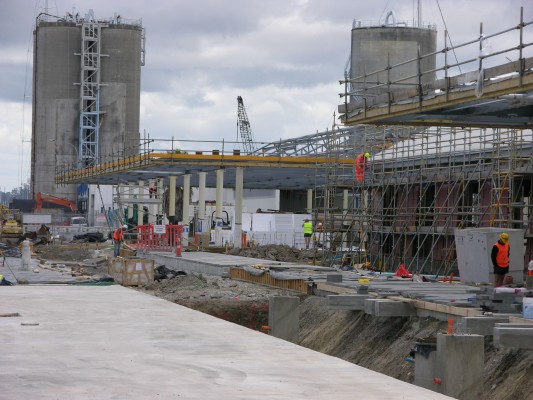 Silo Park:
Silo Park:
Foundation excavations and formwork for the gantry have started. Restoration of the historic rail line has begun.
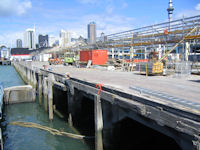 Wynyard Crossing:
Wynyard Crossing:
Preliminary work on the construction of Wynyard Crossing – the interim pedestrian and cycling bridge over the Viaduct Harbour – has begun. Old piles are being removed at the western edge of Viaduct Harbour and construction of the new bridge is designed to minimize disruption to Viaduct tenants and boaties.
North Wharf:
Seismic strengthening on North Wharf has been completed and structural work on the old Red Shed is on schedule to finish in February. Two new adjacent building structures are getting roofs and gutters.
Jellicoe St:
Construction works are progressing well in Jellicoe Street East and West. The first concrete paving slabs have been poured and the first paving has been laid.
Gateway Plaza:
Preparation of the new Gateway Plaza site has begun with the removal of the Emirates Team New Zealand on the western edge of Viaduct Harbour. Team New Zealand has moved south to the old Alinghi base and its old home is being dismantled and sold.
Viaduct Events Centre:
Seven of 14 40m long 55 tonne roof trusses are now in position and clearly visible from the Viaduct Harbour and Wynyard Point.
Jellicoe Western Berthage:
The $1.5m Super Yacht Marina became operational early October and the three new 90m berths were fully occupied within six days.
One of the world’s largest super yachts, the 88m Athena has been in residence along with two 50m plus yachts Atasca and Evica.

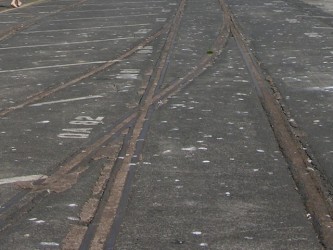
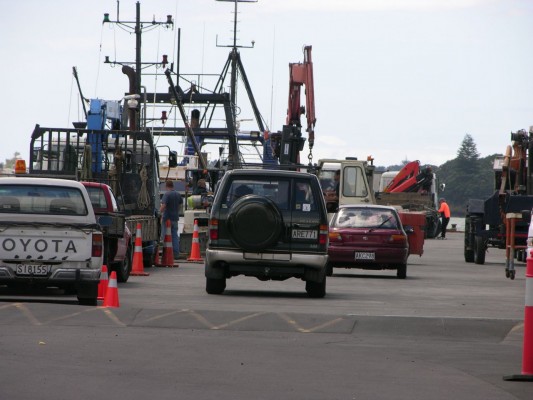
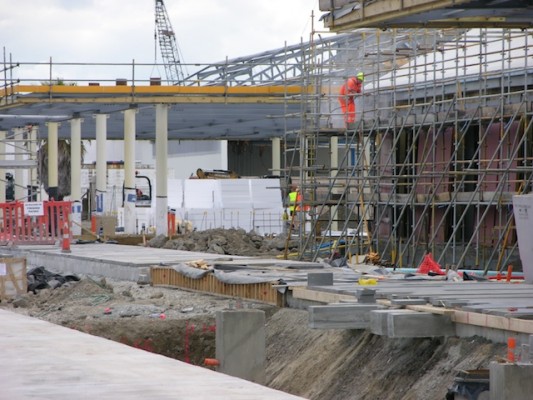
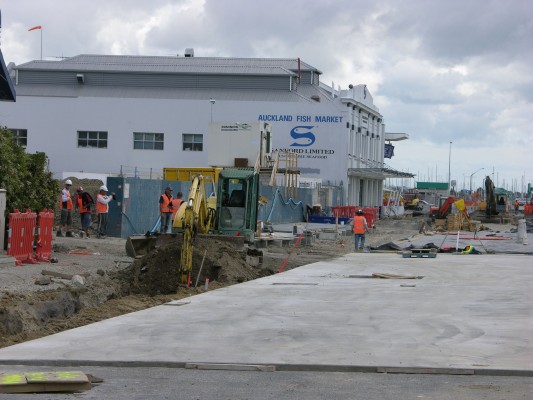
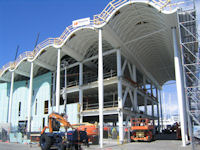
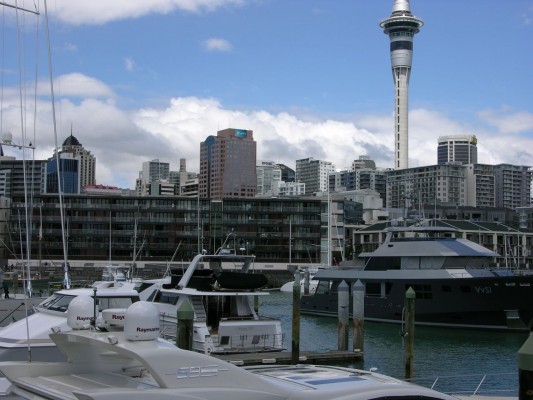
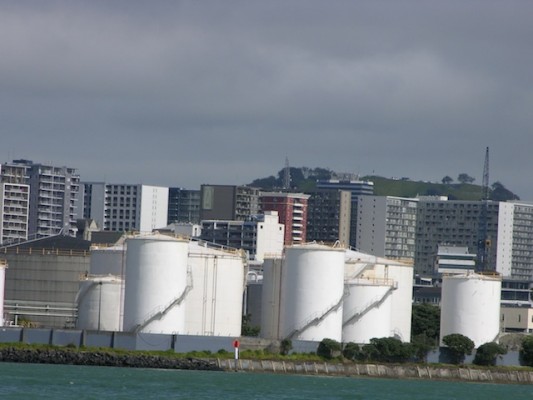










12 Comments
“Restoration of the historic rail line has begun.”
What kind of restoration?
Why did they remove trams from Queen Street?
@Chris From what I have read, buses were apparently viewed as the big new way forward -and it would free up the problem of having tram tracks in the middle of streets hindering cars. Someone with better historical knowledge may know more.
@max so the fans can beat up the aussies if they win they world cup i guess
@Chris
It was also part of a world-wide trend that had existed prior to, and in the post war year.
Sydney was in the process of removing its network,
and many cities in the UK were also removing trams,
I suspect that buses were seen as being able to penetrate deeper into the new suburbs that were expanding, and building new Tram tracks to expand the network would have come with a hefty capital cost.
The completion of the harbour bridge ( without tram tracks) in ’59 would have also been a huge incentive for more buses/cars as opposed to trams.
At the time the trams and the system were very run down and needed a lot of work, neither having had any attention since WWII.
Buses were seen as being much more ‘flexible’, in that they could easily move around obstacles, be sent on new routes and arguable get out of the way of cars easier.
In the end they thought it would be cheaper and more effective to replace the trams with buses, and in the short term they were probably right.
“and it would free up the problem of having tram tracks in the middle of streets hindering cars.”
Street running tram tracks don’t hinder cars! The trams do, however - and so it was their day’s version of opposition to bus lanes: Some car drivers felt that they should be allocated ALL the road space. Sadly they won.
World-wide, those cities which preserved parts of their tram systems are now at the forefront of building new system extensions. Where the trams were ripped out fully, like in Auckland, the resistance to reintroduction is much higher. We simply lost the knowledge of how great they can be. At least these days, with globalisation, more and more Kiwis have used modern overseas systems.
The Global trend to kill off the trams started in the US by automotive lobby group; Bus companys, oil Co’s, freeway construction Co’s and the automotive industry.
They did a pretty good job of it.
did they actually rip the tram rails out?
I’ve heard stories about a street being resurfaced in Auckland a few years ago, with all the old layers of seal taken off. This exposed the tram tracks all the way down the street.
This area was full of old lines once - there was even a line crossing the road crossing Fanshawe Street. I’ve photographed quite a few lines in the area in recent times. I expect them to disappear before too long. When I moved to Auckland in the late 60s some of these sidings were still in use.
Thanks for the fresh photos Jon
the line down Quay St was still available for use 20 years ago. In a Rails mag from around then there is a picture of GVR’s mallet running passenger shuttles along Quay St.
Tracks can still be seen outside Foodtown as well.
I can recall the Quay St tracks still being in use when I was a young kid, about 25 years ago.